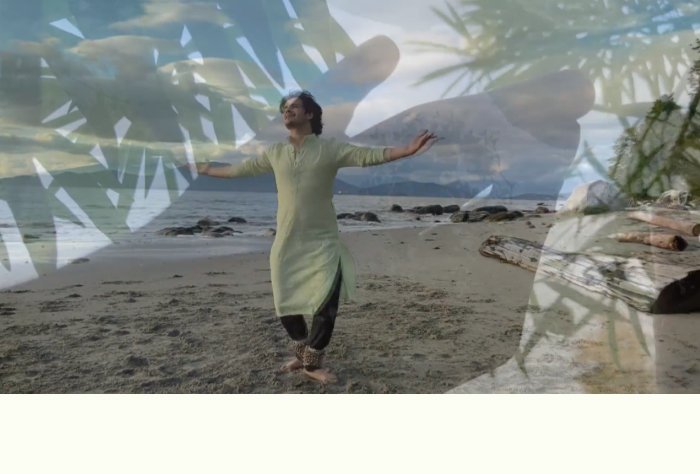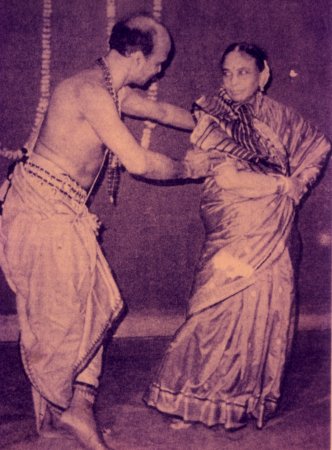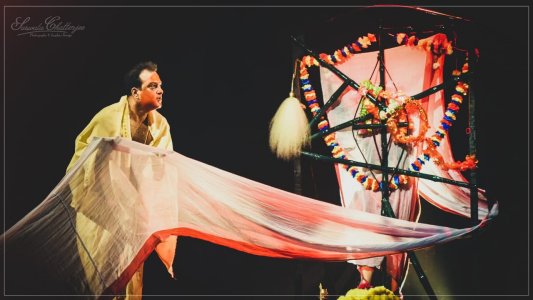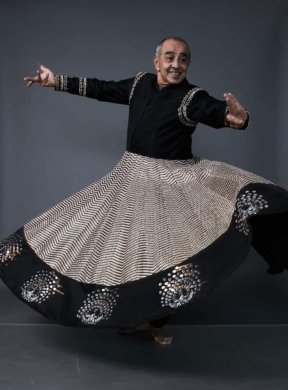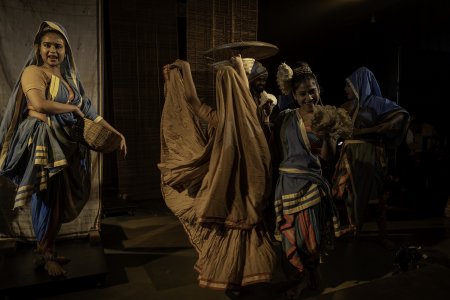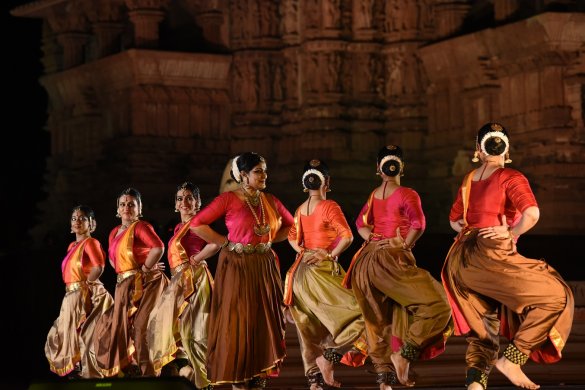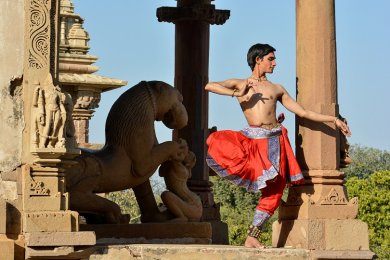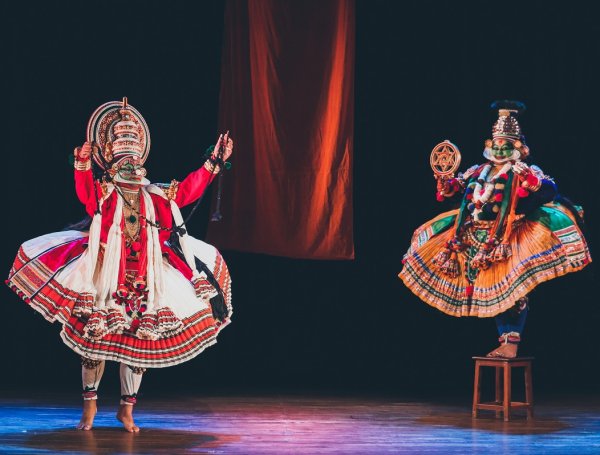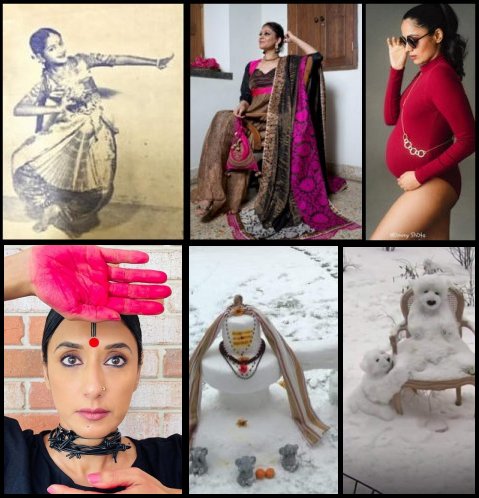Pl provide your name and email id along with your comment
Please provide your name / email id along with your comment. Anonymous and derogatory comments will be removed.
Saturday 27 March 2021
Monsoon melody from corona crescent - The Eastern Eye: Column by Dr.Utpal K Banerjee
Wednesday 24 March 2021
Obit/Tribute - Laxmipriya Mohapatra, the first Odissi dancer on stage - Ileana Citaristi
Pl provide your name and email id along with your comment
Tuesday 23 March 2021
Excellent exotica - The Eastern Eye: Column by Dr.Utpal K Banerjee
Chetana, the celebrated theatre group from the eastern metropolis under the baton of the thespian Arun Mukhopadhyay, would earn its golden jubilee laurels by next year and has been known in India and abroad for several of its landmark productions over the half century of its existence. Indeed, one of its early productions Jagannath mounted in1977 with Arun himself in the eponymous role, made a performance history for group theatre and ran for a spectacular number of nearly 1000 shows, as was proudly announced in the international press conference by the director of Bharat Rang Mahotsav in the capital sometime in the early 2000s. Here is a quick word on the play's overarching excellence.
Jagannath was an adaptation of Lu Xun's Chinese novella, The True Story of Ah-Q, and was indubitably a legendary production of Bengali theatre. Re-worked and Indianised, Arun's character Jagannath was a poor, uneducated villager. All the villagers disregarded him and people of higher ranks did not even consider him to be a human being. No matter what wrongful or unjust treatment he was subjected to, there was no inclination in him to protest or to resist. At the end of the story, when Jagannath was charged with sedition by the then regime and sent to the gallows (on a false charge of being a "revolutionary"), the protagonist made an eloquently defiant gesture against the conspiring world and voluntarily got the noose round his neck! In fact, that defiant laughter of his still rings out in the face of all the oppressive powers on earth, who level such wrong charges of sedition against their innocent victims, just as Nora's slamming the door on her husband's face - at the end of Ibsen's The Doll's House echoes and re-echoes against the global patriarchal society through the centuries, as trenchantly noted by George Bernard Shaw.Kusum Kusum and Girgiti presented on proscenium stage on February 28 by Chetana were equally eloquent productions, especially after the pandemic times! While the first play was an adaptation from Girish Karnad's Flowers, a grim tragedy with deep folk roots, the second one was a heady comedy - again an adaptation from Safdar Hashmi's Gurgit and rooted, in turn, in Anton Chekov's Chameleon - and a boisterous take on the quirky ruling class!
Pl provide your name and email id along with your comment
Saturday 20 March 2021
Tribute - Churned energies of absolute ecstasy - Astad Deboo - Navina Jafa
Linking the ethos of the Parsi religion to dance is both quixotic and interesting. The approaching Parsi New Year Navroz (on March 20) provides an occasion to do so. The lone figure whirled atop in the Indira Gandhi Centre for the Arts. The churning of the dancer lit up like a 'Bindu.' The figure moved it, giving way to concentric circles of emanating energies, slow and continuous. Yet, magically, the figure itself in the centre like a 'Bindu' communicated a potential seed's stillness. The dancing figure was none other than the iconic contemporary Indian dancer Astad Deboo who passed away in December 2020.
Astad began his journeys in dance with Kathak. In this form, the 'chakkars' (pirouettes) operate as a tool for completing a ritual in the larger frame of a spiritual aesthetical pilgrimage. He later delved into Kathakali, the ancient theatrical form honing the expressional art of communicating emotions. His immersion in dances and dancers from various traditions from India and worldwide gave him the multilingual vocabulary of organizing communicative movements to project contemporary themes. On a parallel level, he was a warrior on a mission, a humanist who explored and advocated social change through dance.
Pl provide your name and email id along with your comment
Monday 15 March 2021
Cloud messenger from beyond borders - The Eastern Eye: Column by Dr.Utpal K Banerjee
Meghadootam, christened as Viraha Gatha (Elegy of Separation) and presented on February 17 on proscenium stage by 'Chidakash Kalalay' with munificence from Ministry of Culture, came actually as an overture for a 3-day long Gatha Utsav: Festival of Dance, Music and Theatre: with Padmanka Gatha (play) and Balai (a theatrical monologue on February 18; and a varied fare of Paanch Kaan (another theatre monologue), Dashavidha Rupam (duet-dance) by Akash Mallick and Pinki Mondal, solo music by Debjit Mahalanobis and the final duet music by Debjit and Subhendu Ghosh, all on February 19.
But Meghadootam, which only is reviewed here, had its special charm in being primarily an Urdu version (with a smattering of Multani, Sanskrit and Hindi), composed in 1987 by Raja Pratap Singh Gannari, a poet from West Pakistan, who had migrated to India. [Surprising though it may seem, just as Sanskrit poetry has its superbly nuanced meters, alliterations and other decorative features, Urdu sher-shairi (poetic recitations) - especially across the frontiers, as was this critic's experience once in the early 1990s -- has its highly developed Nafasat and Nazakat (beauty and delicacy), guttural utterance of nukhtas (accents), prolonged pronunciation of compound words, and nasalisation of n-sounds at the word's end (like gulistan, Guldastan, et al.) that make its poetry utterly bewitching!]
Pl provide your name and email id along with your comment
Sunday 14 March 2021
Khajuraho Festival - A mishmash of varying levels of proficiency - Taalam: column by Leela Venkataraman
The week long (Feb 20-26) Khajuraho Festival 2021, experienced virtually by this critic, seemed to attract moderate to larger audiences braving Covid 19. A rich, holistic cultural event, with many other attractions planned round the main performances, the marathon festival was however a bit of a let -down in terms of artiste selection. It left one wondering about the criteria prompting the choice of dancers - projecting the established with the less good, sometimes bordering on still evolving raw talent.
Pl provide your name and email id along with your comment
Tuesday 9 March 2021
Interview - Avijit Das: Kuchipudi is graceful and elegant - Vijay Shanker
Avijit Das was initiated into Bharatanatyam at the age of five under the guidance of Sanaka Biswas of Shanti Niketan, and obtained his Diploma in Bharatanatyam from Kalakshetra, Chennai, on a meritorious scholarship in 2011. Developing a keen interest in Kuchipudi, he had his initial training in Kuchipudi Art Academy under Guru Vempati Chinna Satyam and Manju Bharggavee. He is currently training under Jaikishore Mosalikanti. Avijit also has a Diploma in Carnatic music.
Is this the first time you are performing at the Khajuraho Festival?
Yes. This has been one of the best experiences of my dancing career. I consider it an honor to perform at one of the most well-known/respected dance venues in the country for classical dances. Every aspect of the performance has been handled extremely well and with remarkable professionalism. The organization, audio, video resources, travel, accommodations were quite impeccable.
Pl provide your name and email id along with your comment
Monday 8 March 2021
Article - One Year Frame - Lockdown Technology for dance or Dance for Technology? - Navina Jafa
"Imagine, if you can, a small room, hexagonal in shape, like the cell of a bee. It is lighted neither by window nor by lamp, yet it is filled with a soft radiance. There are no apertures for ventilation, yet the air is fresh. There are no musical instruments, and yet, at the moment that my meditation opens, this room is throbbing with melodious sounds. An armchair is in the centre, by its side a reading desk - that is all the furniture. And in the armchair there sits a swaddled lump of flesh - a woman, about five feet high, with a face as white as a fungus. It is to her that the little room belongs." (E.M. Foster, 'The Stop Machine.')
The small, short story written by E.M. Foster in 1909 rings true for the human community today, as it did one century ago. Compelled to adjust to an alternate, framed world, 'Lockdown' for almost a year, human beings struggle to survive. Foster has several farsighted notions, including mechanisms for prompt instant communication message systems and even the idea of 'cinematophoes' that convey visual images.Technology in the virtual space remains the single most powerful modality for the human community to assert their social and economic existence. "We are in an unprecedented situation, and the normal rules no longer apply. We cannot resort to the usual tools in such unusual times. The creativity of the response must match the unique nature of the crisis...," says UN Secretary-General Antonio Guterres.
COVID-19 has highlighted the equation between the physical activity of dance and technology. For the entire Indian dance community and linked tradition bearers comprising performers, teachers, choreographers, musicians, and even those engaged in technical support of light, stagecraft, sound, literary pursuits, and patronage repositioned themselves to engage in the new frame - 'Lockdown' through technology. The operational reality remains re-inventing journeys to survive in a predominantly recent performance and transmission space from the stage to the small screen 'stage' of a laptop or a mobile screen.
Saturday 6 March 2021
Re-imagining the pastoral god - The Eastern Eye: Column by Dr.Utpal K Banerjee
Ritachhanda Festival presented on the proscenium stage on February 14 by SNB Foundation, offered a bouquet of five dances, Pancha Varna, built around the Krishna theme as visualized by acharya Ashimbandhu Bhattacharya. Performed by seven senior dancers of the city, the contents did assume different hues thematically and were executed in five major classical styles.
Pl provide your name and email id along with your comment
Wednesday 3 March 2021
Animated discussion on to be or not to be of Guru-Shishya - Taalam: column by Leela Venkataraman
The relevance of the Guru/shishya tradition in the contemporary ethos became the focus of animated webinar discussion in an event hosted by Sanjay Kumar Joshi’s Parampara Dance and Music Forum. With Meenakshi Ravi as moderator, the panel interaction, involving senior dancers Swapnasundari, Pushkala Gopal, Prathibha Prahlad, Prerana Shrimali and Alekhya Punjala, voiced a blend of attitudes – with irreverence, at times, hitting a peak.
Pl provide your name and email id along with your comment
Monday 1 March 2021
Anita says...March 2021
Health is not a debt we can cancel
The body collects..Memories, events, heartbreak, loss
and reacts
- Actor Patricia Clarkson in SHARP OBJECTS, a HBO miniseries
Our bodies HAVE collected. Almost a full year of drastic change. A brutal turn around-stopped in our tracks - bodies in collision with nature - minds at war within - hearts torn asunder with confusion and fear..
Yet here we are. Among the ruins (and some shards of rapture) of past 11 months. Surveying how we have somehow found the means to survive while millions have dropped off and fallen through the cracks of Fate and Time. This past year has been called a time of "Global Weirdness" by the New York Times. It seems to fit. We have fallen down the rabbit hole of every dark and dismal sensorial experience and one emotion is echoed through our lives and the voice of the media. FATIGUE.
